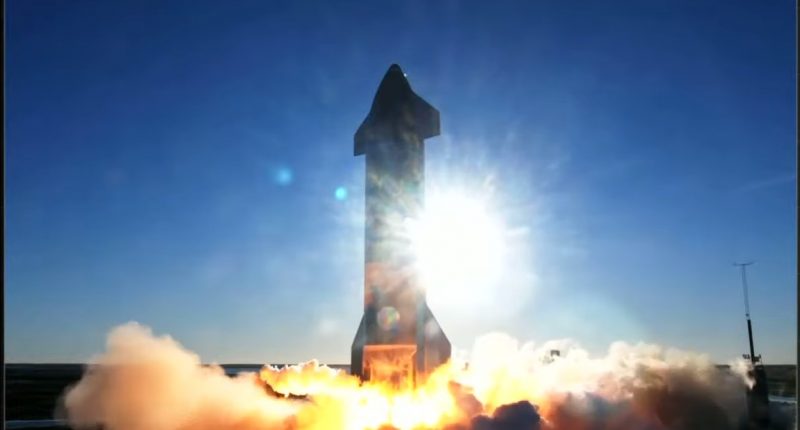From multiple Starlink missions a month to planning lunar satellite launches funded entirely by Dogecoin, SpaceX has been one for innovations and exciting news. Of course, it is thanks to the man behind it all, Elon Musk, that SpaceX and its sister company Tesla are today leaders in their respective sectors. Continuing the tradition of innovation, Musk has announced that the “ocean spaceport” is on the cards, and will be used to launch a Starship rocket as soon as 2022.
Named “Deimos,” after one of the moons of Mars, the ocean spaceport will be the result of the transformed oil rig that SpaceX purchased earlier this year, Musk tweeted. It is already under construction and could launch operations next year. The ocean spaceport is part of the forthcoming Starship rocket system, serving as the launch pad and landing platform for the SpaceX Starship. The reusable Starship which will be launched from Deimos would be joined by its Super Heavy rocket booster for its July Full-stack launch.
Ocean spaceport Deimos is under construction for launch next year https://t.co/WJQka399c7
— Elon Musk (@elonmusk) May 30, 2021
The image in his tweet depicts an offshore platform in the middle of the ocean, where a standing Starship was erected, and the facility getting ready for its launch.
The other oil rig purchased by SpaceX would be converted into the ocean spaceport Phobos, acting as offshore staging grounds for Starship launch activities. Since the ocean spaceports are part of Musk’s mission to send people and goods to the Red Planet, the names sound fitting. Phobos and Deimos are currently being converted in the Port of Brownsville near SpaceX’s Starbase facility in Boca Chica, Texas.
Being positioned within the reach of major hubs worldwide, Phobos and Deimos fit well into Musk’s vision of SpaceX’s operation of a global network of hypersonic point-to-point travel using Starships ferrying people in very little time.
This comes after SpaceX successfully landed a Starship prototype for the first time and launched a plethora of Starlink satellites into orbit. SpaceX also bagged a $3 billion contract from NASA recently, and its offshore platforms could launch rockets as early as next year, it seems. However, the first crewed trips to Mars could happen only as early as 2024.
For now, SpaceX is focusing on the test of the Starship SN16, which would be the first to use SpaceX’s 70-meter tall Super Heavy rocket booster, which will help propel the 50-meter craft into orbit.





